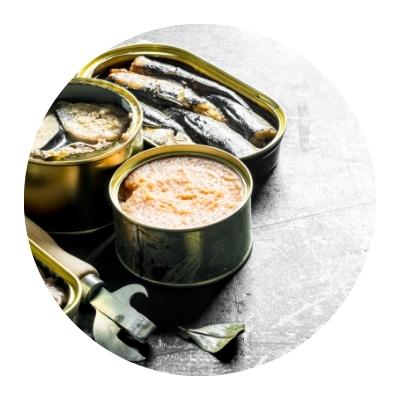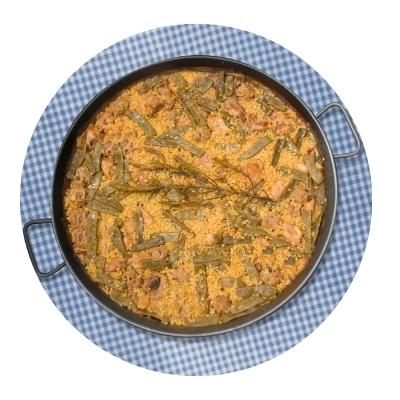Jamón and 10 other essential Spanish cured meats

Whether it's the heavenly jamón ibérico or the potent, spicy chorizo, it's almost impossible to spend time in Spain without sampling Spanish cured meats. And while ham and chorizo tend to get all the praise, there are dozens of other cured delicacies that are equally delicious.
Each region of Spain makes sausages using different seasonings and curing methods. Some use paprika de la Vera, while others opt for a combination of spices such as bay leaves, rosemary and garlic. The vast majority of Spanish sausages are made with pork, although beef shares a little of the limelight in some northern regions.
In this article we give a brief introduction to 11 of the most important sausages in Spanish gastronomy.
1. Jamón
Spanish cured ham is the undisputed king of Spanish cured meats. But not all Spanish hams are the same, there are different qualities depending on the breed of pig, the feed or the curing time. Although there are many different breeds of pigs in Spain, we generally refer to two main types of ham: Serrano ham and Iberian ham. The pigs used for Serrano ham are usually common white-hoofed breeds, such as the Duroc. The pride of Spanish hams are the pata negra hams, from the Iberian breed of pig, indigenous to Spain and Portugal, and fed on acorns during the montanera.
2. Chorizo
Although there are different formats of chorizo, varying in shape, thickness and degree of spiciness, in essence it always has the same base: pork, bacon, paprika from La Vera, garlic and salt.
From this base you can find spicier chorizos like the one from León, smoked ones like the Asturian ones or Iberian ones like the one produced in Jabugo with Iberian breed pigs.
3. Lomo
Lomo is made from the part of the same name (loin) from white and Iberian pigs. This sausage is left practically whole and untouched during the curing process. Only a little salt and paprika are added, giving it a mild and delicate flavour.
The best Iberian loins are highly prized (almost as much as ham) and are characterised by having infiltrated fat when cut, similar in appearance to wagyu meat.
4. Salchichón
Similar to chorizo, salchichón is made from minced pork and bacon and then slowly cured in drying rooms in the cold air of the mountains and often with smoke. The difference is in the spices. While chorizo is red with paprika, salchichón is usually dark brown with black pepper.
Because of its mild flavour it is one of the sausages most consumed by all members of the family and in many rural areas of Spain it is still common for each family to make their own salchichón.
5. Paletilla
Paletilla is almost the same as ham but made from the front legs of the pig. Just like ham, there are Serrano shoulder and Iberian shoulder. The main difference with ham is that the shoulder is smaller and has more bone and therefore less meat, but on the other hand it is usually juicier than ham because it contains more fat.
In some cities in Spain, such as Seville, a large majority of customers in tapas bars prefer the paletilla to the jamón, which reflects the high quality of this sausage.
6. Sobrasada
Sobrasada is a typical sausage from Mallorca and the rest of the Balearic Islands that is often confused with chorizo. This is due to its reddish-orange appearance and colour and to the fact that it is also made with paprika and pork.
But sobrassada is made in a different way: the Mallorcan black pork is finely ground, mixed with salt, paprika and other spices, and stuffed into a wide intestine. The result is a kind of spicy pâté that is usually eaten spread on toasted bread.
Buy sobrasada from Mallorca >>
7. Morcilla
Morcilla is a very different product depending on the area of Spain where it is found. The most popular black pudding comes from the city of Burgos, where pig's blood is mixed with rice, red pepper, salt and onion and put into casings.
In other areas morcilla is made with other ingredients, in Jabugo they also add meat and other spices resulting in a sausage more similar to chorizo. In Extremadura they make morcilla patetera, with potato and paprika, with a similar appearance to sobrassada.
8. Fuet
Fuet can be recognised by the thin layer of white mould that surrounds its casing. This hard sausage from Catalonia has a characteristic pork flavour with ground black pepper and garlic. When cut, it has a similar taste and appearance to salami.
9. Cecina
Cecina is beef's answer to Spanish ham. Most common in León, cecina is made by curing the hindquarter of a cow for over 7 months. The result is a burgundy-coloured cured meat that is cut into thin strips and served with a light drizzle of olive oil. The flavour is more intense than pork.
10. Chistorra
Chistorras are like mini sausages, usually stuffed into thin lamb casings and cured for only a few days, so they need to be cooked before eating. These small sausages seasoned with paprika are usually prepared fried together with eggs and potatoes.
11. Botillo
Botillo, with its strange reddish, lumpy shape, may look strange, but it tastes amazing. It is said that every bit of pork that the butcher doesn't know what to do with is stuffed into a thick sack of tripe with lots of paprika, salt and garlic to make botillo. This sausage is typical of the Leonese region of El Bierzo and its name comes from the Latin word botellus which means pig intestine.
SHARE:





